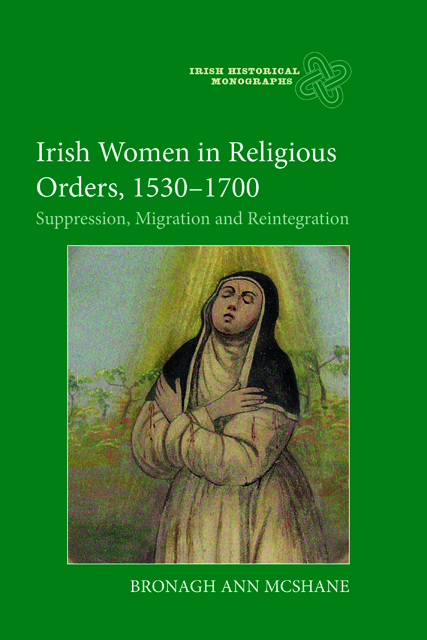1 - Female religious communities and the Henrician suppression campaigns
Published online by Cambridge University Press: 17 December 2022
Summary
In Ireland, as in England, the dissolution of religious houses was integral to the Henrician reform programme. In Ireland, the majority of monasteries within the orbit of English government influence (greater Leinster and south-east Munster) were suppressed during the late 1530s and early 1540s. A systematic visitation of religious houses resulted in the resignation of heads and communities (who were pensioned off) and confiscation of their real estate and chattels. The subsequent distribution of properties and rights to tithes and advowsons among the lay elite ensured that the dissolutions and concomitant legislative reforms in respect of religion were met with relative equanimity. While the impact of the monastic dissolution campaigns of the late 1530s and early 1540s on lay society has received significant scholarly attention, notably through the work of Brendan Bradshaw, Mary Ann Lyons and Brendan Scott, relatively little is known about the experience of those most affected by the dissolutions, namely the religious themselves. This is especially true for female religious. For them, like their counterparts across Europe, the suppression of the monasteries was exceptionally disruptive, marking as it did an abrupt end to a formal, cloistered, and exclusively female way of religious life, which traced its origins back to the early Christian church. As Merry E. Wiesner-Hanks has observed in the context of Reformation Europe, the closure of convents suddenly removed women’s opportunities for expressing their spirituality in an ‘all-female context’. Unlike male religious, many of whom were later appointed to positions within the hierarchy of the Tudor state church, female religious in Ireland, as in England and Europe, were deprived of their communities and left without any option for a formal vocational life. That possibility would not reappear in any formal sense, and then in largely exiled circumstances, until the early decades of the seventeenth century.
Whereas scholars such as Kathleen Cooke, Claire Cross, Mary Erler, Marilyn Oliva, and Noreen Vickers have adumbrated the ways in which the suppression campaigns impacted the lives of English and, to a lesser extent, Welsh women religious, studies of their Irish counterparts have been notably absent from Reformation historiography.
- Type
- Chapter
- Information
- Irish Women in Religious Orders, 1530-1700Suppression, Migration and Reintegration, pp. 19 - 60Publisher: Boydell & BrewerPrint publication year: 2022



